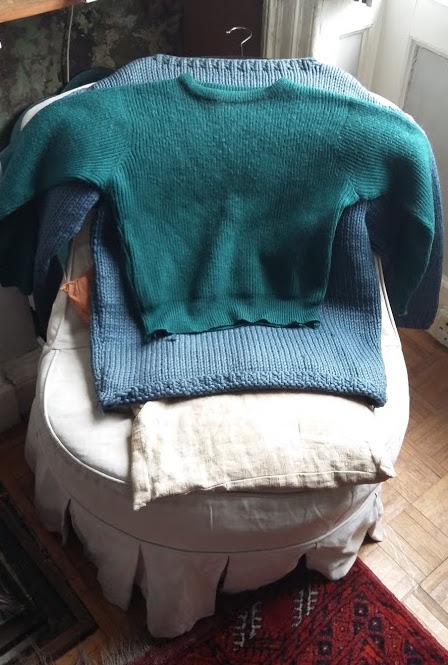September:
I have started to explore museum collections of clothes and memories. So far these include the Foundling Museum, London; Worthing Musuem and a forthcoming project with Market Hall Museum, Rugby.
The Foundling Museum is an amazing place with its heart breaking stories of orphaned children and the philanthropy that surrounded them. There’s the tokens left by mothers unable to look after their child as a means of identifying them should they ever be in the position to take their child back, most never did. In a time when many were illiterate this token was an object, a coin, button, a ring – a tactile thing that the child themselves was never aware of.
Foundling Museum booklet. Janette Bright and Gillian Clark, printed by Lamport Gilbert Ltd, 2011.
At one stage in the school’s history the token system used small swatches of fabric cut from clothing or a scarf. The mother kept one half and the other remained in a sealed envelope at the Foundling Hospital. A postage stamp sized remnant of a bond. Then there are the uniforms they children wore, quite military for boys and more of a nurse like smock or apron for girls; for many preempting their future vocations. The museum has recorded oral histories from former pupils at the hospital. As part of my research I am looking forward to going through these transcripts listening for references to clothing and associated tactile memories.
Foundling Museum postcard, ‘London Foundling Hospital, girls’ schoolroom.
Worthing museum has the third largest collection of clothing in the country. Behind the scenes, the room they are stored in is stacked to the ceiling with rows of boxes. I loved that the itemized number for each item of clothing is logged and filed in drawers categorized by the body part they adorn.
Behind the scenes at the museum
In this room of boxes it was difficult to know where to start, but during one afternoon with local writer Suzanne Joinson, items we carefully unwrapped include shepherd’s smocks from the 1800s, various black Victorian mourning shawls, 1920’s woollen bathing costumes, a collapsible opera hat, nylon stockings from the 1930s and WW2 uniform from the Women’s Land Army.
Shepherds Smock from 1800s
1930s stockings, early use of nylon
Of particular interest where items that relate to the location. Worthing, the seaside town, has for many years been a place ‘to take the sea air’. Seaside towns it seems are depositories for memories; sandcastles on the beach, fish and chips after a braising swim. Worthing also has a large population of elderly people, making it a place where people bring their memories. Over the years the coastline has continually shifted, the land been used for mining flint, farming and fishing. The clothing in the museum that connects to these particularities of place is something we would like to explore more.
1920s woollen swimsuit
WW2 Womens Land Army trousers
I am excited that in forthcoming weeks I have been selected to work with Market Hall Museum and Heritage and Culture Warwickshire to lead a series of workshops with an Asian’s womens group to explore recent migration stories and co-create new artwork for exhibition. Within these workshops we will explore memories associated with participant’s clothing and other keepsakes, as well as making connections with items in the museum. During the workshops participants will be interviewed for new audio recordings of oral histories to be included in ‘Our Warwickshire’ website. These stories and histories will feed into the ‘memory spaces’ each participant will make.
What seems important in all of this is are the people, their memories of place and how the physicality of clothing can connect the two.












